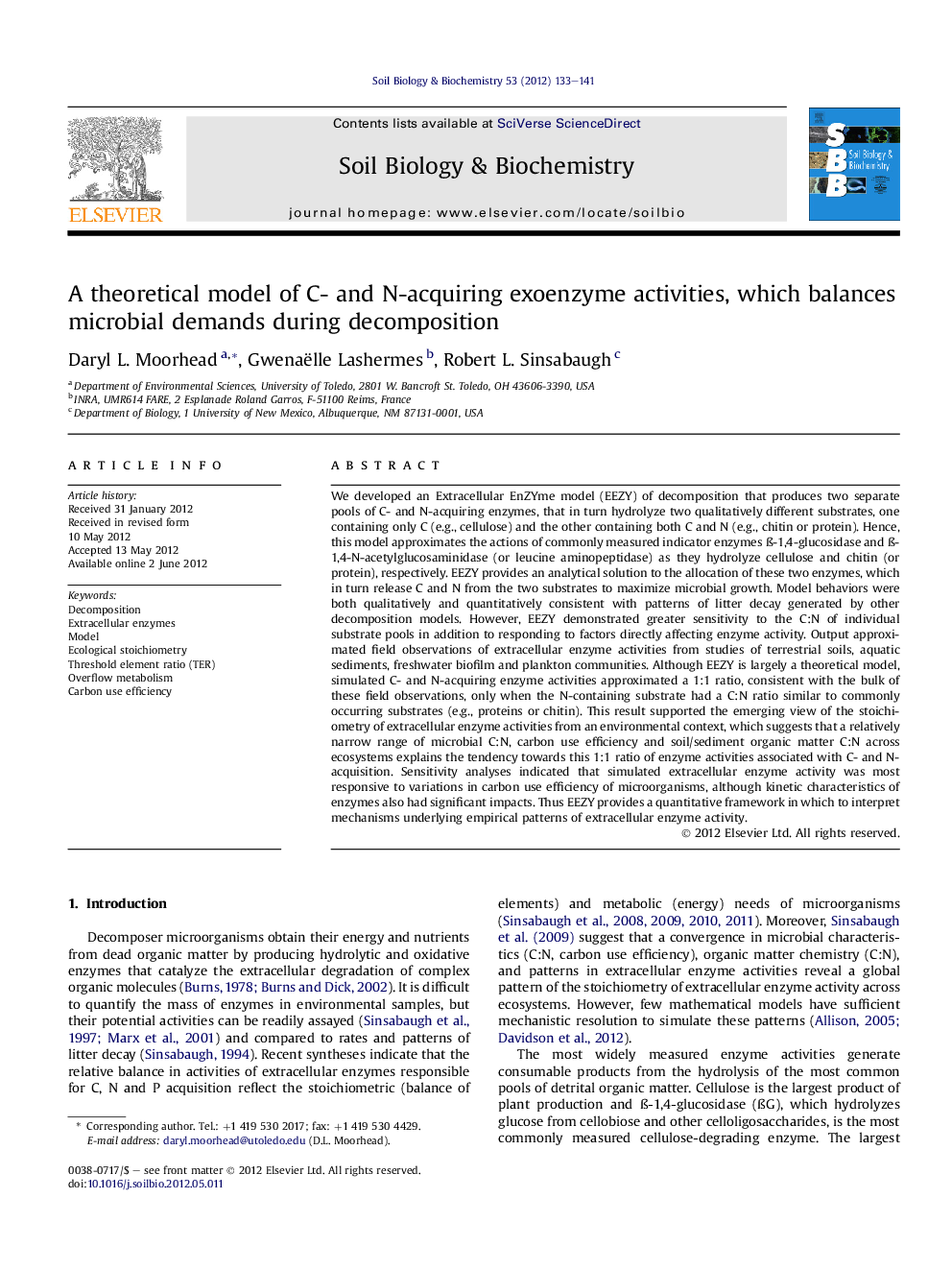| کد مقاله | کد نشریه | سال انتشار | مقاله انگلیسی | نسخه تمام متن |
|---|---|---|---|---|
| 2024923 | 1542631 | 2012 | 9 صفحه PDF | دانلود رایگان |

We developed an Extracellular EnZYme model (EEZY) of decomposition that produces two separate pools of C- and N-acquiring enzymes, that in turn hydrolyze two qualitatively different substrates, one containing only C (e.g., cellulose) and the other containing both C and N (e.g., chitin or protein). Hence, this model approximates the actions of commonly measured indicator enzymes ß-1,4-glucosidase and ß-1,4-N-acetylglucosaminidase (or leucine aminopeptidase) as they hydrolyze cellulose and chitin (or protein), respectively. EEZY provides an analytical solution to the allocation of these two enzymes, which in turn release C and N from the two substrates to maximize microbial growth. Model behaviors were both qualitatively and quantitatively consistent with patterns of litter decay generated by other decomposition models. However, EEZY demonstrated greater sensitivity to the C:N of individual substrate pools in addition to responding to factors directly affecting enzyme activity. Output approximated field observations of extracellular enzyme activities from studies of terrestrial soils, aquatic sediments, freshwater biofilm and plankton communities. Although EEZY is largely a theoretical model, simulated C- and N-acquiring enzyme activities approximated a 1:1 ratio, consistent with the bulk of these field observations, only when the N-containing substrate had a C:N ratio similar to commonly occurring substrates (e.g., proteins or chitin). This result supported the emerging view of the stoichiometry of extracellular enzyme activities from an environmental context, which suggests that a relatively narrow range of microbial C:N, carbon use efficiency and soil/sediment organic matter C:N across ecosystems explains the tendency towards this 1:1 ratio of enzyme activities associated with C- and N-acquisition. Sensitivity analyses indicated that simulated extracellular enzyme activity was most responsive to variations in carbon use efficiency of microorganisms, although kinetic characteristics of enzymes also had significant impacts. Thus EEZY provides a quantitative framework in which to interpret mechanisms underlying empirical patterns of extracellular enzyme activity.
► A two enzyme-two substrate mechanistic model of decomposition.
► Decomposition balanced by C and N demands of microorganisms.
► Optimal enzyme allocation alters enzyme:biomass ratios.
► Biomass, respiration and N-mineralization driven by enzyme allocation.
► Simulated patterns of enzyme activities match observations.
Journal: Soil Biology and Biochemistry - Volume 53, October 2012, Pages 133–141